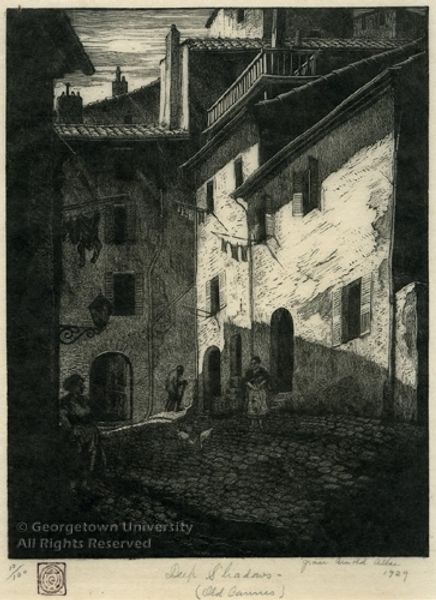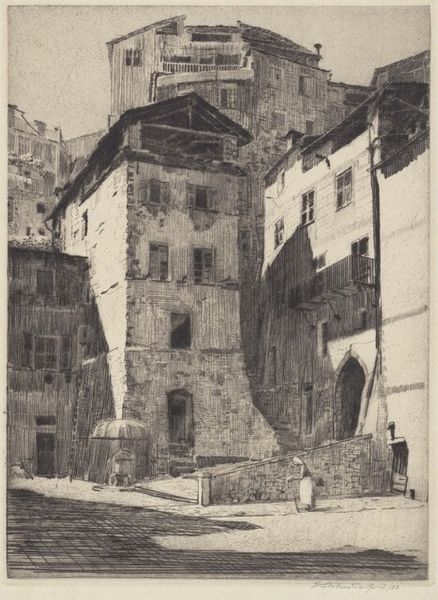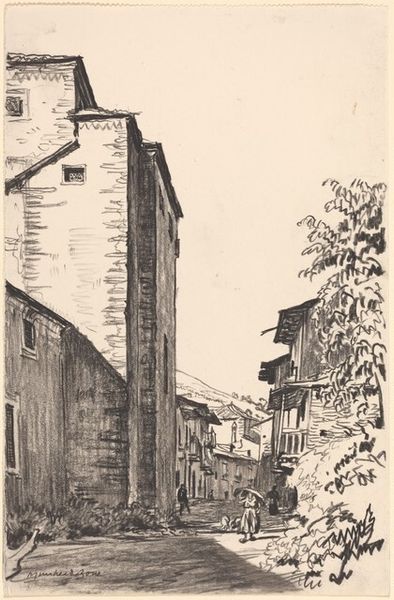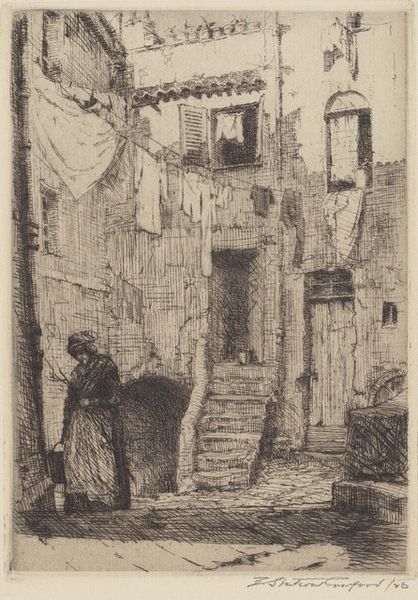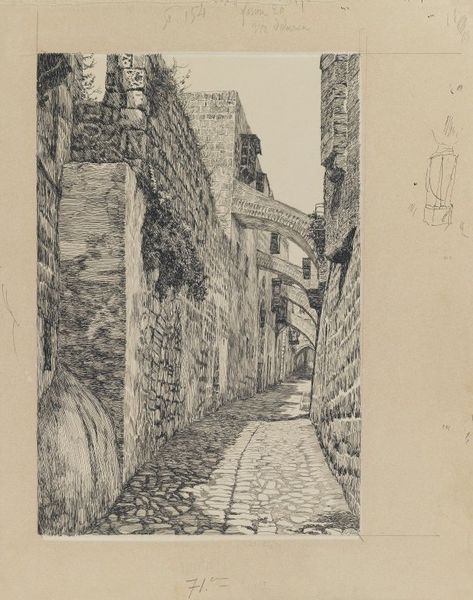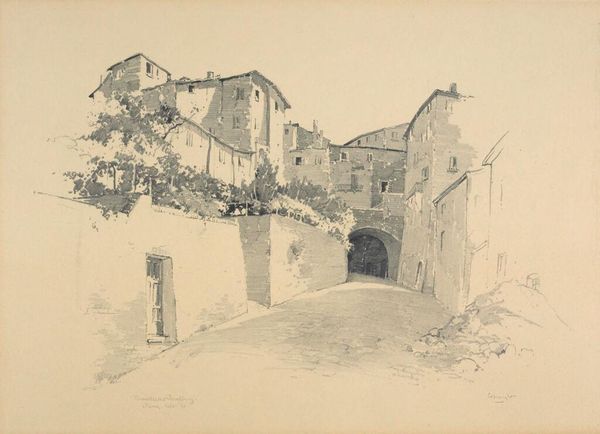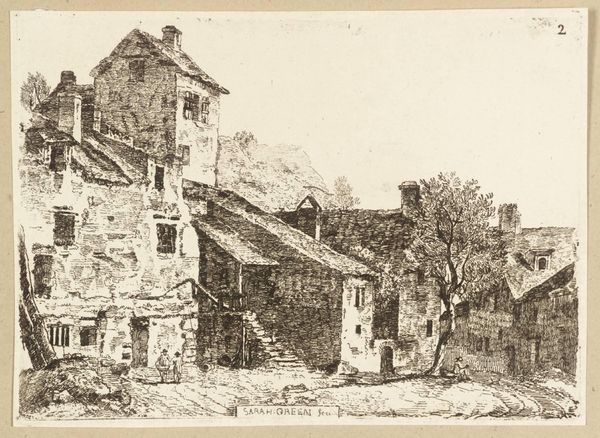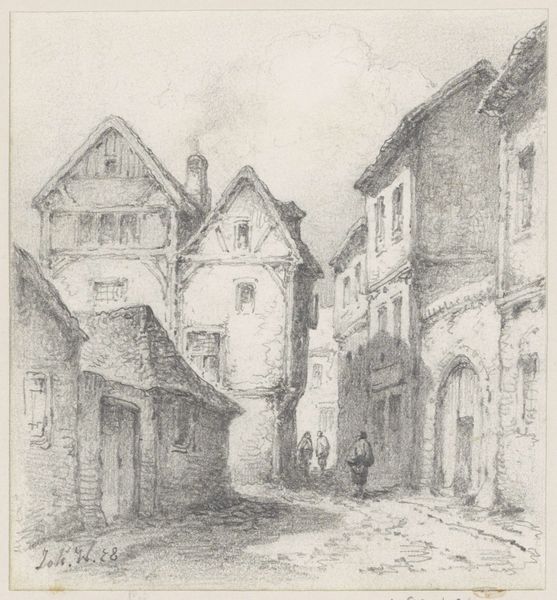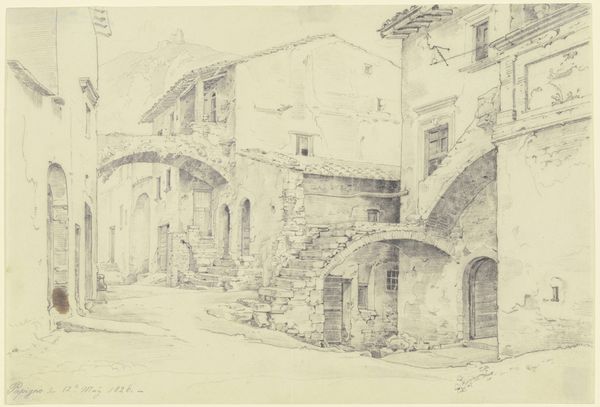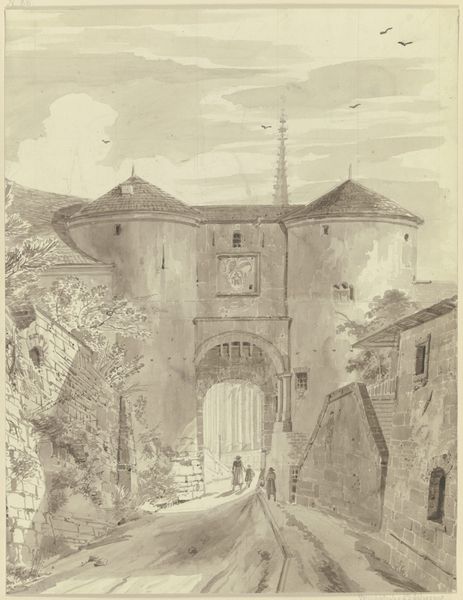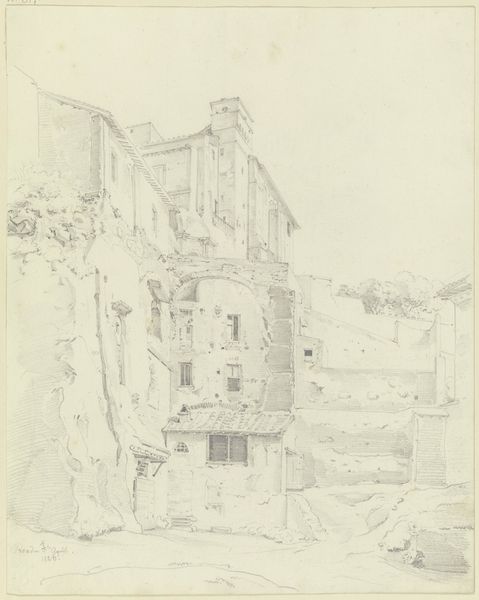
drawing, pencil
#
pen and ink
#
drawing
#
pen sketch
#
pencil sketch
#
pencil
#
cityscape
#
academic-art
#
realism
Dimensions: overall: 42.3 x 28.6 cm (16 5/8 x 11 1/4 in.)
Copyright: National Gallery of Art: CC0 1.0
Editor: Here we have Earl Stetson Crawford's "Street in Sospel, France," created in 1931 using pencil and ink. The scene, at first glance, feels a bit melancholic, almost as if the town is in a state of quiet ruin. What stories do you think are embedded within the sketch? Curator: It's fascinating how the seemingly simple sketch invites such profound questions. The architectural details speak of time and history, but more interestingly, the image teems with the cyclical narratives of creation, decay, and recreation that mirror the broader human experience. The damaged facades are not just stone and mortar, they signify memory etched in physical form. Notice the activity on the balcony; do these small domestic acts create a sharp juxtaposition against the ruin or an affirmation of continuous occupation? Editor: That’s a compelling perspective. I was so focused on the disrepair that I nearly missed the figures inhabiting the space. The balcony almost feels like a stage for everyday life. It does makes me wonder if the state of decay signifies the transient nature of life itself? Curator: Precisely! In many cultures, ruins carry spiritual weight, a poignant reminder of mortality, loss, and impermanence but they can also point to regeneration. The endurance of community in the face of decline perhaps tells us something about the human spirit too. What purpose does the artist convey, would you say, of placing figures that give us scale against a history so immovable? Editor: Perhaps Crawford highlights resilience. That even with time's passage, a place and community still remain. I've always considered sketches mere outlines, but it feels like it communicates so much more here. Curator: Agreed! In art and in life, symbols aren't always obvious, yet often they offer complex windows into a cultural memory we inherit. They reflect back to us a greater, timeless story.
Comments
No comments
Be the first to comment and join the conversation on the ultimate creative platform.
